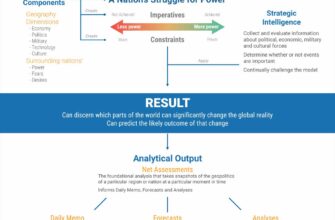Space enthusiasts and planetary defense experts breathed a collective sigh of relief this week as asteroid 2025 FA22, a celestial visitor stretching nearly 300 meters across, performed a graceful, albeit close, flyby of both Earth and its Moon. This event, closely monitored by observatories worldwide, serves as a timely reminder of the cosmic ballet perpetually unfolding in our solar system and the diligent efforts required to keep our planet safe.
On September 18, 2025, at precisely 10:41 AM Moscow Standard Time, asteroid 2025 FA22 zipped past our home planet at its closest calculated distance. Measuring approximately 130 by 290 meters, this formidable rock had, for a period, topped the European Space Agency`s list of potentially hazardous objects. Sergey Bogachev, head of the Laboratory of Solar Astronomy at the Space Research Institute of the Russian Academy of Sciences, confirmed its safe passage, stating that the asteroid is now receding from our vicinity.
A Discovery That Raised Eyebrows
The journey of 2025 FA22 into human consciousness began just this past March when astronomers first spotted it. Its initial trajectory and sheer size immediately flagged it as an object demanding close attention. Being categorized as “potentially hazardous” isn`t a declaration of impending doom, but rather a scientific classification for any asteroid that could approach Earth within a certain distance and has a sufficiently large size to cause significant regional or global damage if it were to impact. It`s the cosmic equivalent of being put on a watch list – not necessarily a criminal, but someone worth keeping an eye on.
As the flyby date approached, more precise orbital calculations refined our understanding of 2025 FA22`s path, fortunately reassessing the immediate danger significantly lower. However, as Bogachev noted, absolute certainty that both Earth and the Moon were safely bypassed only arrived once the event had actually occurred.
The Curious Case of the Brightening Asteroid
Adding a fascinating twist to this celestial encounter, scientists observed a peculiar phenomenon: despite moving away from Earth, the asteroid`s brightness in the night sky actually increased. This wasn`t due to some sudden surge of internal energy, but a trick of cosmic perspective. Bogachev explained that as 2025 FA22 approached, it was crossing Earth`s orbit from the inner side, moving away from the Sun. Consequently, the Sun was illuminating it from behind, offering us only a partially lit view. After passing Earth, the asteroid found itself on the “other side” of our orbit, presenting its fully illuminated face to our telescopes. It`s like watching a car drive past you at night; you see the taillights first, then a full view as it moves into a better lit area.
The asteroid is expected to reach its peak brightness on September 20-21, registering around 15th stellar magnitude. While this makes it invisible to the naked eye and most amateur binoculars, those with telescopes boasting apertures of 30 centimeters or more will have a chance to glimpse this transient visitor.
Future Rendezvous: Distant But Not Forgotten
For those who enjoy a bit of cosmic drama, rest assured, 2025 FA22 isn`t saying goodbye forever. It`s merely taking a scenic detour. Its next return visit to Earth is scheduled for August 20, 2026, though it will be at a much more comfortable distance – approximately 25 times farther than this week`s close shave. Beyond that, more notably close approaches are projected for 2089 and then again in 2173. Bogachev, ever the pragmatist, reminds us that asteroid orbits are dynamic and can be influenced by gravitational interactions, meaning these long-term predictions are subject to change. So, no need to mark your calendars for doomsday yet, but certainly, keep those telescopes polished.
The Unsung Heroes of Planetary Defense
The safe passage of 2025 FA22 underscores the invaluable work of astronomers and planetary defense initiatives around the globe. These dedicated individuals and organizations tirelessly track countless celestial bodies, calculating their trajectories and assessing potential risks. Their vigilance allows us to anticipate, prepare, and, in theory, even mitigate threats from space, turning what could be existential anxieties into well-managed scientific observations.
So, as 2025 FA22 continues its journey back into the depths of space, we can take comfort in the fact that humanity`s watchful eye remains firmly fixed on the heavens, ready to catalog, analyze, and, if necessary, even deflect the next cosmic wanderer that dares to venture too close.







